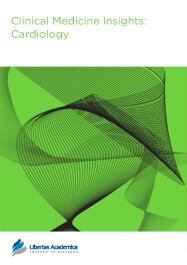

Publication Date: 17 May 2011
Type: Review
Journal: Clinical Medicine Insights: Cardiology
Citation: Clinical Medicine Insights: Cardiology 2011:5 49-54
doi: 10.4137/CMC.S4434

Hereditary angioedema (HAE) is a clinical disorder characterized by a deficiency of C1 esterase inhibitor (C1-INH). HAE has traditionally been divided into two subtypes. Unique among the inherited deficiencies of the complement system, HAE Types I and II are inherited as an autosomal dominant disorder. The generation of an HAE attack is caused by the depletion and/or consumption of C1-inhibitor manifested as subcutaneous or submucosal edema of the upper airway, face, extremities, or gastrointestinal tract mediated by bradykinin. Attacks can be severe and potentially life-threatening, particularly with laryngeal involvement and treatment of acute attacks in the United States has been severely limited. In December 2009 the FDA approved ecallantide for the treatment of acute HAE attacks. Ecallantide is a small recombinant protein acting as a potent, specific and reversible inhibitor of plasma kallikrein which binds to plasma kallikrein blocking its binding site, directly inhibiting the conversion of high molecular weight kininogen to bradykinin. Administered subcutaneously, ecallantide was demonstrated in two clinical trials, EDEMA3 and EDEMA4, to decrease the length and severity of acute HAE attacks. Although there is a small risk for anaphylaxis, which limits home administration, ecallantide is a novel, safe, effective and alternative treatment for acute HAE attacks.
PDF (445.73 KB PDF FORMAT)
RIS citation (ENDNOTE, REFERENCE MANAGER, PROCITE, REFWORKS)
BibTex citation (BIBDESK, LATEX)
XML
PMC HTML

I am impressed by the efficiency at each step of submission in the journal. Based on the first-hand experience, I am confident that this journal will have a great future, and the impact factor will rise rapidly.

All authors are surveyed after their articles are published. Authors are asked to rate their experience in a variety of areas, and their responses help us to monitor our performance. Presented here are their responses in some key areas. No 'poor' or 'very poor' responses were received; these are represented in the 'other' category.See Our Results
Copyright © 2013 Libertas Academica Ltd (except open access articles and accompanying metadata and supplementary files.)
Facebook Google+ Twitter
Pinterest Tumblr YouTube